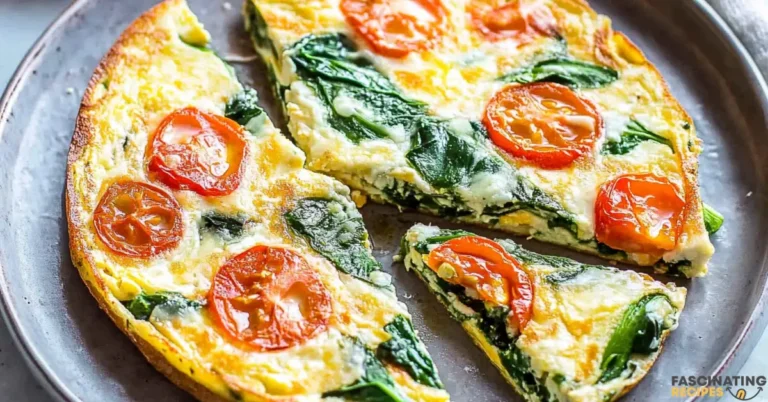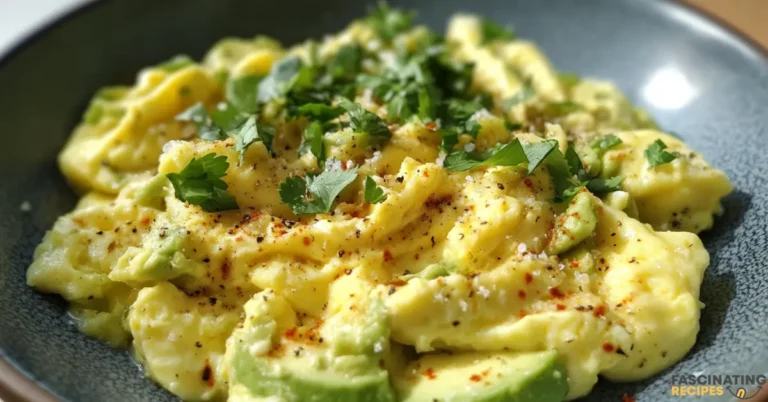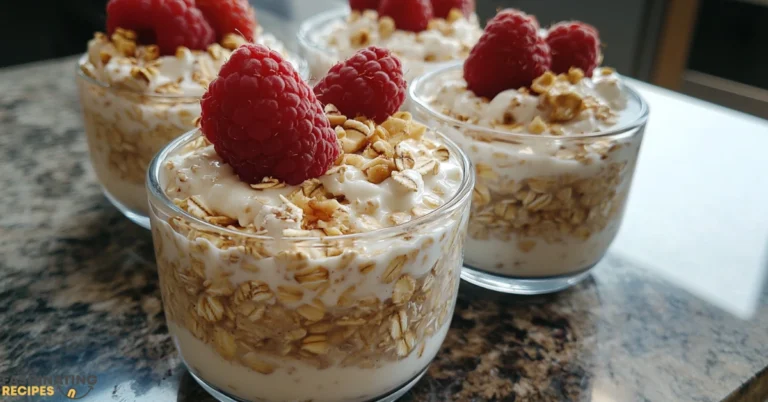Classic Homemade Scones
Every kitchen has a secret that makes moments special. For me, it’s freshly baked homemade scones. They add warmth and comfort to any afternoon. Scone recipes are perfect for when you want something simple yet fancy.
Scones are more than a pastry. They connect us to centuries of baking. Whether you’re new to scones or a pro, they promise to improve your baking and delight your taste buds.
Homemade scones have won hearts around the world. They’re loved for their soft texture and many flavors. Imagine the joy of pulling golden scones from the oven. They fill your home with a scent that invites everyone to come and enjoy.
Table of Contents
Key Takeaways
- Scones are a quick and delicious baked treat perfect for any occasion
- Homemade scones take just 30 minutes to prepare
- Basic ingredients make scone recipes accessible to all skill levels
- Versatile pastry that can be sweet or savory
- Traditional British treat now loved globally
What Are Scones?
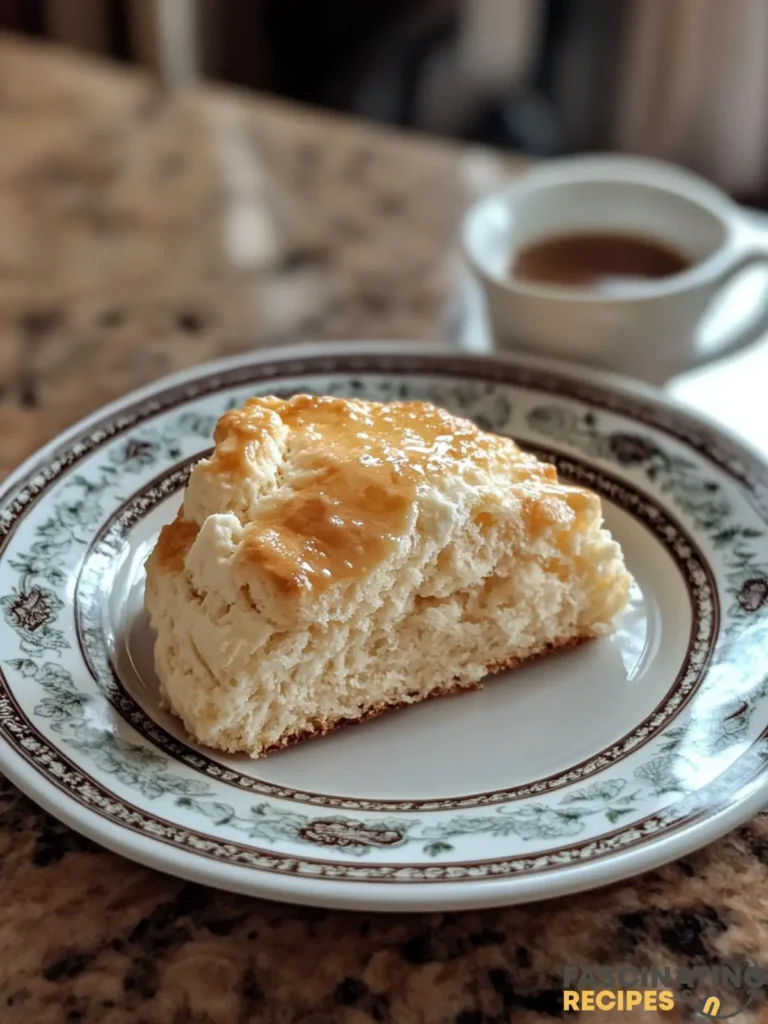
Scones are a beloved baked treat with a rich history. They spark debates about pronunciation and cultural variations. Whether you say “skohn” or “skon”, these delightful pastries have captured the hearts of food lovers across different continents.
The correct pronunciation of scone remains a playful point of contention. British dictionaries reveal fascinating regional differences. In Northern England and Scotland, /skɒn/ is common. In the English Midlands and Ireland, /skoʊn/ is more prevalent.
The History of Scones
Tracing back to 1513, scones have a remarkable journey documented in the Oxford English Dictionary. Their origins can be linked to Scotland. They evolved from a simple bread to a cherished tea-time delicacy.
“A scone is not just a pastry, but a cultural experience that bridges traditions.” – Anonymous Pastry Historian
Different Types of Scones
The difference between British and American scones is more than just pronunciation. It’s a culinary philosophy. Traditional British scones embrace minimalism. American versions celebrate flavor complexity.
- British Scones: Barely sweet, often plain or with sultanas
- American Scones: Sweeter, with diverse mix-ins like fruits, nuts, and chocolate
| Characteristic | British Scones | American Scones |
|---|---|---|
| Sweetness Level | Minimal | Pronounced |
| Typical Shape | Round | Triangular |
| Common Add-ins | Currants, raisins | Fruits, nuts, chocolate, cheese |
From the Edmonds Cookery Book in New Zealand to pumpkin scones in Australia, these versatile pastries continue to delight taste buds worldwide.
Essential Ingredients for Perfect Homemade Scones
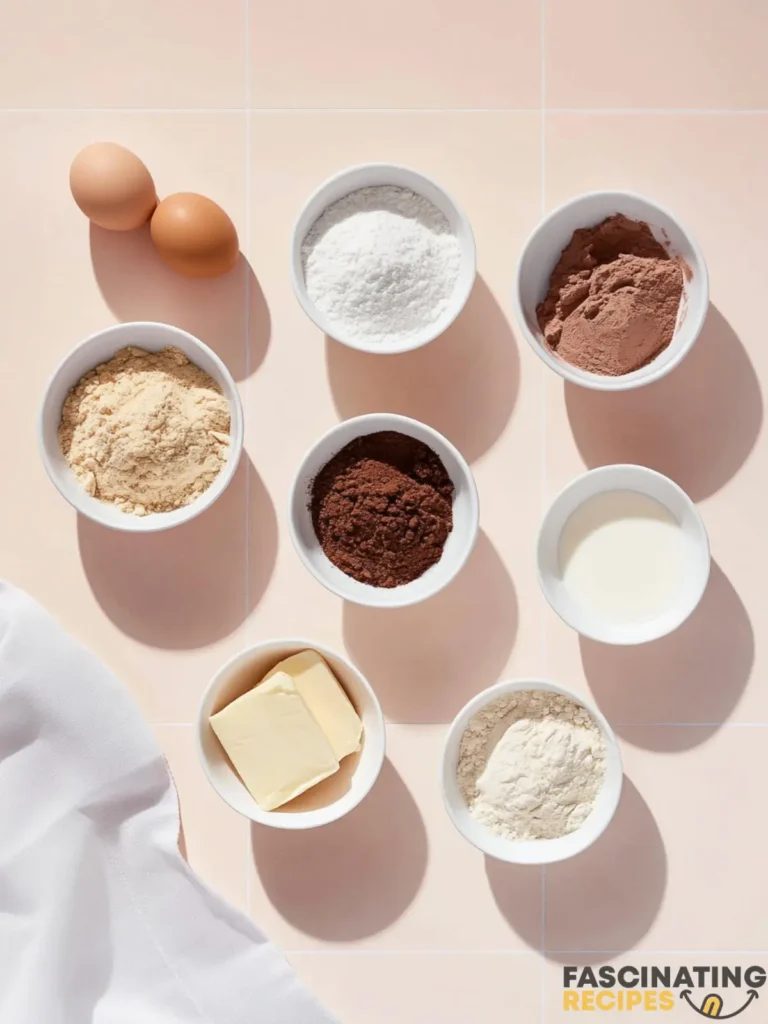
To make the best scones, you need to know the key ingredients. These ingredients turn a simple recipe into a tasty treat. Choosing high-quality components is key to success.
Selecting the Right Flour
Flour is the base of any great scone. Use all-purpose flour for its balanced protein. This ensures your scones are tender and light.
- All-purpose flour: 2 cups
- Protein content: Moderate (10-12%)
- Texture: Soft and consistent
Baking Powder: The Rising Star
Baking powder is vital for light and fluffy scones. Without it, your scones will be flat. Use 1 tablespoon of fresh baking powder for the perfect rise.
“The secret to a perfect scone is in the lift!” – Pastry Chef Emma Richardson
Fresh Ingredients Make the Difference
Success in your scone recipe depends on fresh, quality ingredients. Cold butter is essential for flaky layers.
| Ingredient | Quantity | Purpose |
|---|---|---|
| Unsalted Butter | 6 tablespoons | Creates flaky texture |
| Half-and-Half | 2/3 cup | Adds moisture |
| Sugar | 5 tablespoons | Enhances sweetness |
| Salt | 1/2 teaspoon | Balances flavors |
Pro tip: Always keep your butter chilled for 15-30 minutes before baking to ensure the most delectable, flaky scones!
Step-by-Step Instructions for Making Scones

Making the perfect scones is easier than you think. Whether you’re new to baking or have lots of experience, these steps will guide you. You’ll make scones that will wow your loved ones.
Preparing the Dough
The secret to great scones is gentle dough handling. First, get your ingredients ready: 3 cups of all-purpose flour, 1/3 cup granulated sugar, 1 tablespoon baking powder, and 1 1/2 sticks of cold, cubed unsalted butter.
- Use a pastry cutter or cold fingers to mix butter into dry ingredients
- Work quickly to keep butter cold and prevent over-mixing
- Create a crumbly texture that resembles coarse breadcrumbs
Shaping and Cutting Scones
Scones and muffins differ in texture and preparation. For scones, aim for a round of dough about 3/4-inch thick with a 6-inch diameter.
- Pat dough into a circular shape on a floured surface
- Use a sharp scone cutter or knife to divide into 8 wedges
- Separate wedges and place on a baking sheet
Baking Tips for Best Results
To get golden-brown scones, pay close attention. Preheat your oven to 400°F and follow these tips:
- Refrigerate dough for 15 minutes before baking
- Brush tops with egg wash for a beautiful golden color
- Bake for 12-15 minutes until lightly browned
“The key to perfect scones is cold ingredients and gentle handling.” – Baking Expert
Your homemade scones are now ready to enjoy! Serve warm with clotted cream and jam for a delightful treat.
Flavor Variations to Experiment With
Scones are a great way to get creative in the kitchen. You can make them sweet or savory, depending on what you like. Let’s look at some fun flavor combinations to turn your scones into something special.
Classic Buttermilk Scones
Buttermilk makes scones tangy and tender. It helps them become light and fluffy. When making buttermilk scones, it’s important to get the liquid and flour just right.
Fruit-Infused Delights
If you love fruit, you’ll enjoy scones with fruit. Blueberry scones are sweet and juicy, while lemon scones are bright and citrusy. Here are some great fruit mix-ins:
- Blueberry scones with a hint of lemon zest
- Lemon scones with poppy seeds
- Mixed berry variations
- Dried cranberry and orange zest combinations
Savory Cheese Scones
If you prefer something less sweet, try sourdough scones with cheese. You can use different cheeses to find your favorite mix.
| Cheese Type | Flavor Profile | Recommended Herb Pairing |
|---|---|---|
| Cheddar | Sharp and tangy | Chives |
| Gouda | Smooth and nutty | Thyme |
| Feta | Salty and crumbly | Oregano |
“The secret to amazing scones is experimenting with flavors that excite your taste buds!” – Professional Baker
For the best scones, mix your ingredients well. Use about 1 cup of mix-ins per batch, whether it’s fruit, nuts, or cheese. Your taste buds will love the journey!
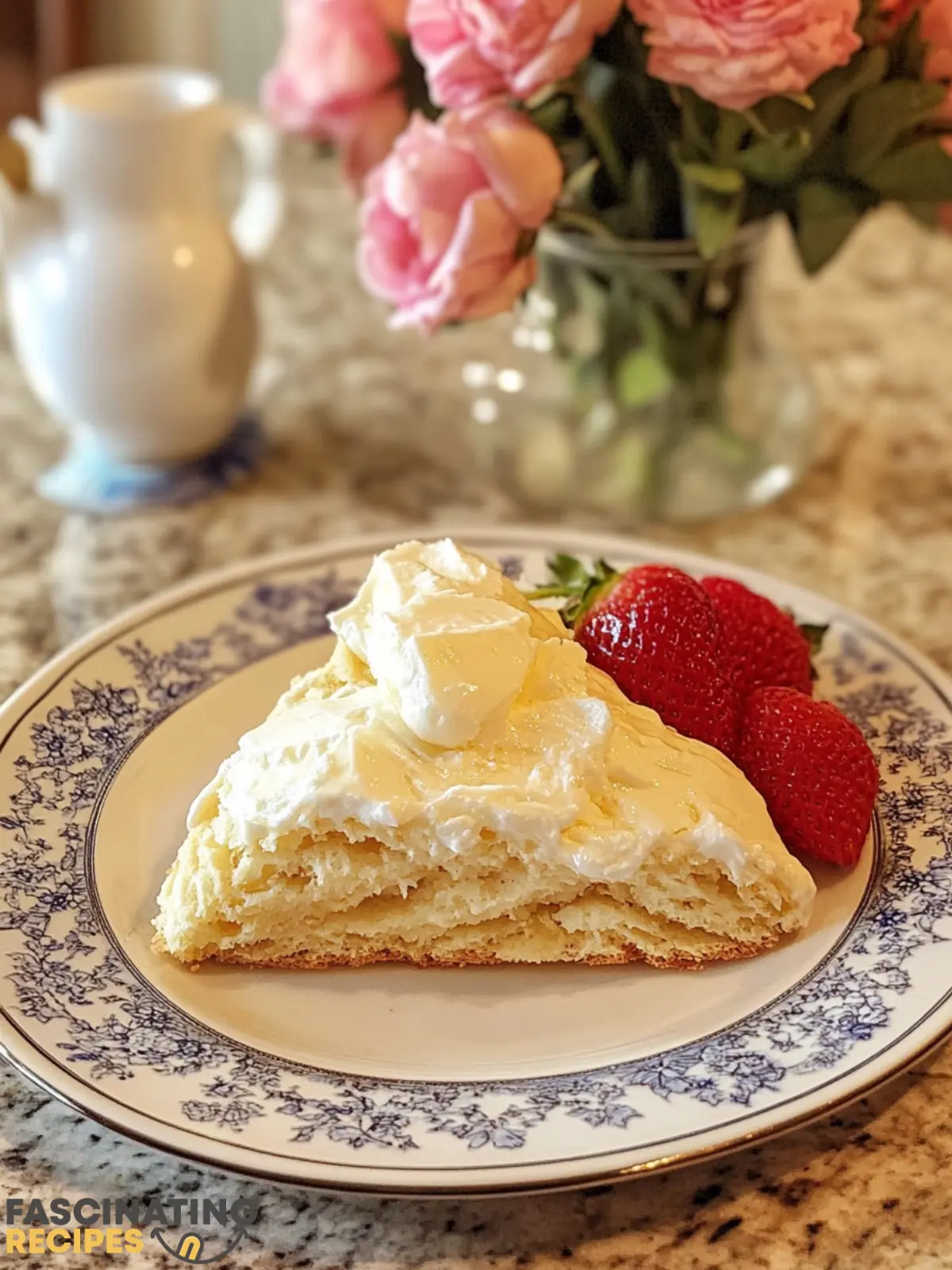
Classic Homemade Scones
Ingredients
Method
- Preheat & Prepare:Preheat your oven to 400°F (200°C). Line a baking sheet with parchment paper.
- Mix Dry Ingredients:In a large bowl, whisk together the flour, sugar, baking powder, and salt.
- Cut in the Butter:Add the cold, cubed butter to the flour mixture. Use a pastry cutter or your fingertips to work the butter into the flour until it resembles coarse crumbs.
- Combine Wet Ingredients:In a separate bowl, whisk together the heavy cream, egg, and vanilla extract until well combined.
- Form the Dough:Gradually add the wet ingredients to the dry mixture, stirring gently with a spatula. If using add-ins (fruit, chocolate, or zest), fold them in now. The dough should be slightly sticky but manageable.
- Shape the Scones:Lightly flour a clean surface and turn out the dough. Gently knead 3-4 times to bring it together. Pat it into a 1-inch thick disc, then cut into 8 wedges or use a round cutter for traditional scones.
- Bake:Place the scones on the prepared baking sheet, spacing them apart. Brush the tops with a little extra heavy cream for a golden finish. Bake for 15-18 minutes or until the tops are lightly golden.
- Cool & Serve:Let the scones cool slightly on a wire rack before serving. Enjoy warm with jam, butter, or clotted cream!
Notes
- Use Cold Butter for Flaky Texture:Cold butter is key to achieving flaky and tender scones. If your butter softens while mixing, pop the dough into the fridge for 10-15 minutes before baking.
- Don’t Overwork the Dough:Overmixing can lead to dense scones. Mix the dough until just combined, and gently knead only a few times to bring it together.
- Chill the Dough for Best Results: For extra flaky scones, refrigerate the shaped scones for 10-15 minutes before baking. This helps solidify the butter, preventing spread and creating layers.
How to Serve Scones for Tea Time
Make your afternoon tea special with the right scone serving traditions. Many ask about the difference between scones and biscuits. But true tea lovers know that how you serve is just as important as how you bake.
Traditional Clotted Cream and Jam Pairing
In Britain, serving scones has its own special ways. In Devon and Cornwall, there’s a big debate. It’s about whether to put jam or cream first.
Interestingly, most people have a strong opinion on this. They either prefer cream first or jam first.
- Devon Method: Cream first, then jam
- Cornwall Method: Jam first, then cream
Perfect Tea Pairings
When you think about British biscuits and gravy, remember scones and tea go together. The right tea can make your scones even better.
| Tea Type | Scone Compatibility |
|---|---|
| Earl Grey | Classic Pairing |
| English Breakfast | Strong Complement |
| Darjeeling | Delicate Match |
Presentation Tips
Serving scones is an art. Here’s how to do it right for a perfect afternoon tea:
- Use separate spoons for cream and jam
- Serve scones at room temperature
- Break scones into bite-sized portions
- Aim for approximately 30 grams of clotted cream per scone
“A proper scone is not just a pastry, but a cultural experience.” – British Tea Enthuasiast
Whether you’re new to tea or a long-time fan, learning to serve scones will change your tea time.
Storing and Reheating Scones
Scones are sweet biscuits in America. They need careful storage to keep their taste and texture. Fresh scones stay good for 1-2 days at room temperature. Store them in an airtight container to keep them soft.
Freezing is great for longer storage. Wrap each scone in plastic wrap and put them in a freezer-safe bag. They can stay frozen for up to 3 months. To thaw, leave them at room temperature for an hour or in the fridge overnight.
Reheating scones gently is key to avoid drying them out. Use an oven at 350°F for 5-8 minutes. Air fryers can be set to 325°F for 3-5 minutes. Microwaves should be at 100% power for 10-20 seconds per scone.
Pro tip: unbaked scones can be frozen for up to 3 weeks. Bake them straight from the freezer. Place them on a baking sheet with space between, and bake at 350°F for 15-20 minutes. This way, you can have warm scones whenever you want.
What exactly are scones?
Scones are baked pastries from Scotland. They’re made with flour, butter, and milk. Unlike biscuits, they have a unique texture. In the US, they’re sweeter and more like cake.
How do you pronounce “scone” correctly?
There’s a debate on how to say “scone”. Some say “scohn”, others “scoan”. Both are okay, depending on where you’re from.
What’s the difference between British and American scones?
British scones are lighter and less sweet. They’re often eaten with clotted cream and jam. American scones are denser and sweeter, with many flavors like blueberry or chocolate.
Can I make scones ahead of time?
Yes, you can make scone dough ahead. Refrigerate it for up to 24 hours. Or freeze it for 3 months, baking it straight from the freezer.
What are the best flour types for making scones?
All-purpose flour is good for most scones. For a lighter texture, try pastry flour or a mix of all-purpose and cake flour. Some like self-rising flour for extra softness.
How do I get a perfect scone texture?
Keep the dough cold and handle it little. Use cold butter and don’t overmix. This makes the scones flaky and tender.
What are some popular scone variations?
You can find many scone types, like blueberry, lemon, or chocolate chip. Cheese, sourdough, and buttermilk scones are also popular. Just add different ingredients to the basic recipe.
How should I serve scones?
Serve British-style with clotted cream and jam. Enjoy with black tea or Earl Grey. For an American twist, try them with butter or spreads.
How long do scones stay fresh?
Eat scones the day they’re baked for the best taste. Store them in an airtight container for 1-2 days. Freeze for longer storage and reheat to refresh.
Can I make gluten-free or vegan scones?
Yes! Use gluten-free flour and plant-based butter for gluten-free scones. For vegan scones, replace dairy with almond, oat, or soy milk and use egg substitutes like flax eggs or applesauce.
Conclusion: Scones – A Timeless Treat for Any Occasion
Scones are the perfect balance of buttery, flaky, and delicious, making them a versatile treat for breakfast, brunch, or an afternoon snack. Whether you enjoy them sweet with jam and cream or savory with cheese and herbs, scones are an easy-to-make, comforting baked good that never goes out of style.
The best part? They’re quick to prepare, endlessly customizable, and perfect for meal prep, so you can always have a fresh batch ready for any occasion. Whether you’re baking for a special gathering or simply treating yourself, scones offer a warm, homemade touch that everyone will love.
Looking for more easy and delicious breakfast ideas? Check out our Easy Breakfast Ideas for more quick and satisfying meal inspiration. If you prefer a hearty, grab-and-go option, try our Breakfast Burrito for a protein-packed morning meal!
Now, it’s time to preheat your oven and enjoy the timeless delight of homemade scones!

